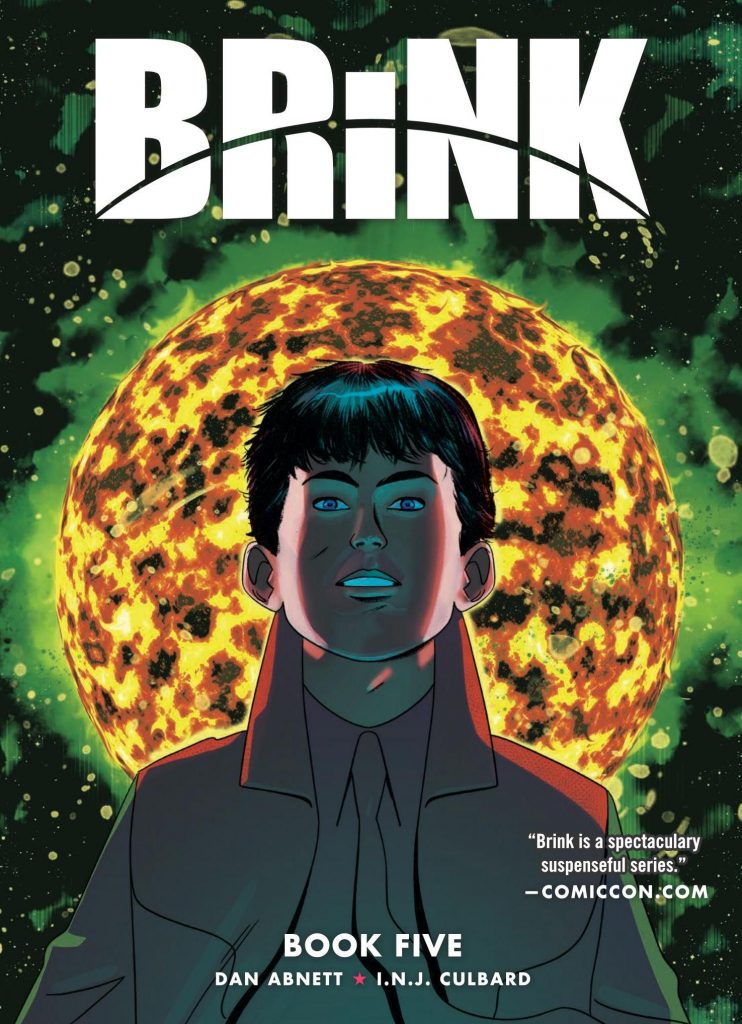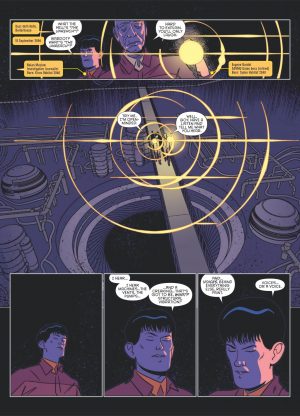Review by Ian Keogh
Another volume of Dan Abnett and I.N.J. Culbard’s wonderfully downbeat Brink is always welcome, and Abnett continues his pattern of setting the story over a few chapters with lead character Bridget Kurtis unseen. Well, that’s not quite true. She’s seen on the first page, and briefly a couple of times after, but this isn’t her story as Abnett rewinds to the events of Brink Book One, approaching them from a different perspective.
Abnett introduces Mas, a once viable reporter, now in need of redemption, investigating possible smearing of a workers union, while members of that union are only being given minor tasks on a controversial new corporate construction. That’s revealed to new recruit Leeden. Subtle touches indicate he’s not to be trusted, and that proves to be the case.
Bridget Kurtis and her dry personality have been such a great part of Brink’s previous four volumes, that absenting her to investigate the bigger picture is a risk that may not pay off, especially as Abnett deliberately keeps Brink as a slow, quiet read. Mas is driven, enthusiastic and diligent, but he’s a lesser personality, in what’s a dense, but slow slog as he pulls the strands together. It ties in well with Brink Book One, but offers few concessions to readers, takes a long time to go anywhere, and Bridget’s absence means there are no action interludes, just page after page of Mas prodding away and without getting as many answers as he’d like. There’s slow and there’s slooooooooow.
Of course, since those pages are Culbard’s work, they look very attractive, and his unusually bright and distinctive colouring contrasts a very dark tale. His style has modified since first beginning Brink, so this looks a little different from Book One, despite being set concurrently. The first rate design is still apparent, but now his layouts are beginning to show touches of Dave Gibbons.
The question of how far Mas may be disappearing down the rabbit hole hangs over his tenacity, and his work is continual informed speculation and joining the dots. Whereas previous books have focussed on police, political expediency and commercial concerns, here Abnett concentrates on the press and unions, not greatly straying from real world problems, and just as in the real world, they’re ignored by politicians. As the revelations become greater and the danger more intense there seems only one path toward the end, and disappointingly for the good writer Abnett is, that’s the path taken. It’s a shame.
What Book Five proves is that Brink is a more engaging read for an investigation with a greater likelihood of the conversation being interrupted by at least some action.





